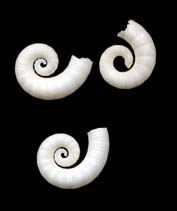Spirula spirula (Linnaeus, 1758)
Ram's horn squidWarning: DOMDocument::load(): SSL operation failed with code 1. OpenSSL Error messages: error:140770FC:SSL routines:SSL23_GET_SERVER_HELLO:unknown protocol in C:\Apache24\htdocs\includes\SpeciesSummary.lib.php on line 1236
Warning: DOMDocument::load(): Failed to enable crypto in C:\Apache24\htdocs\includes\SpeciesSummary.lib.php on line 1236
Warning: DOMDocument::load(https://sealifebase.nrm.se/webservice/AquaMaps/getAMap.php?genus=Spirula&species=spirula): failed to open stream: operation failed in C:\Apache24\htdocs\includes\SpeciesSummary.lib.php on line 1236
Warning: DOMDocument::load(): I/O warning : failed to load external entity "https://sealifebase.nrm.se/webservice/AquaMaps/getAMap.php?genus=Spirula&species=spirula" in C:\Apache24\htdocs\includes\SpeciesSummary.lib.php on line 1236
Classification / Names Common names | Synonyms | CoL | ITIS | WoRMS
| Spirulida | Spirulidae
Environment: milieu / climate zone / depth range / distribution range Ökologie
Pelagisch; tiefenbereich 100 - 1750 m (Ref. 1695). Tropical; ? - 10°C (Ref. 1695); 69°N - 32°S, 89°W - 160°W
Verbreitung Länder | FAO Gebiete | Ecosystems | Vorkommen | Einführungen
Circumglobal in tropical and subtropical oceanic waters. Tropical to polar.
Length at first maturity / Size / Gewicht / Alter
Maturity: Lm ?, range 30 - ? cm Max length : 4.5 cm ML Männchen/unbestimmt; (Ref. 1695)
Minimum depth from Ref. 106682. Rarely exceeds 4.5 cm ML (Ref. 1695). Migrates from 550 to 1000 meters during the day, and 100 to 300 meters at night (Ref. 106682). Young is captured at depths 1,000 to 1,750 m, which suggests that females lay eggs on bottom of continental slopes (Ref. 1695). Dead shells washed up on the beaches often in large numbers (Ref. 88739).
Life cycle and mating behavior Geschlechtsreife | Fortpflanzung | Ablaichen | Eier | Fecundity | Larven
Members of the class Cephalopoda are gonochoric. Male and female adults usually die shortly after spawning and brooding, respectively. Mating behavior: Males perform various displays to attract potential females for copulation. During copulation, male grasp the female and inserts the hectocotylus into the female's mantle cavity where fertilization usually occurs. Life cycle: Embryos hatch into planktonic stage and live for some time before they grow larger and take up a benthic existence as adults.
Hauptreferenz
Referenzen | Koordinator | Partner
Jereb, P. and C.F.E. Roper (eds.). 2005. (Ref. 1695)
IUCN Rote Liste Status (Ref. 130435)
nicht bedroht (LC) ; Date assessed: 29 March 2009
CITES Status (Ref. 108899)
Not Evaluated
CMS (Ref. 116361)
Not Evaluated
Bedrohung für Menschen
Nutzung durch Menschen
| FishSource |
Tools
Mehr Information
Internet Quellen
BHL | BOLD Systems | CISTI | DiscoverLife | FAO(Publication : search) | Fishipedia | GenBank (Genom, nucleotide) | GloBI | Gomexsi | Google Books | Google Scholar | Google | PubMed | Tree of Life | Wikipedia (Gehe zu, Suchen) | Zoological Record
Estimates based on models
Preferred temperature
(Ref. 115969): 4.7 - 11.6, mean 7.1 (based on 951 cells).
Preiskategorie
(Ref. 80766):
Unknown.



